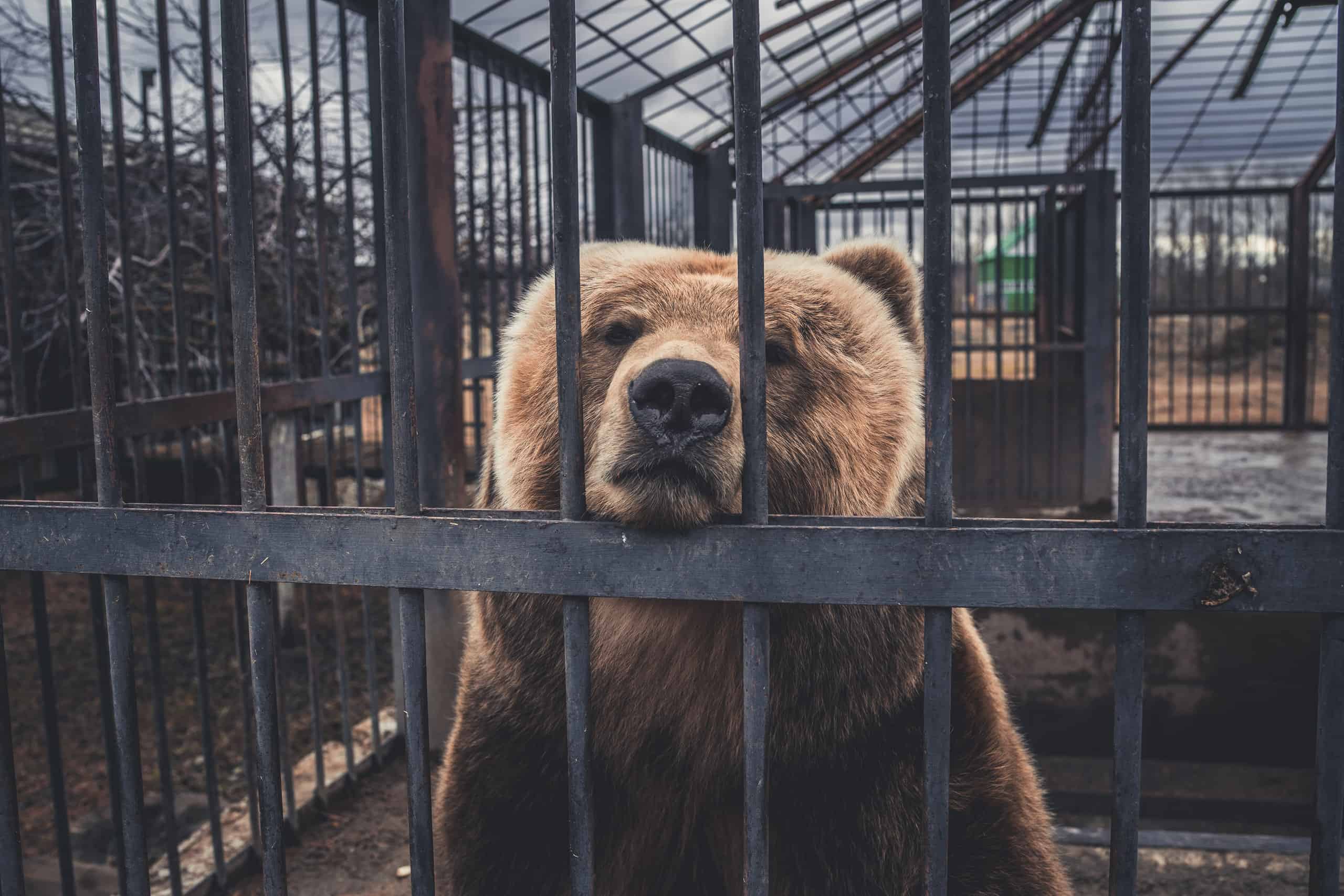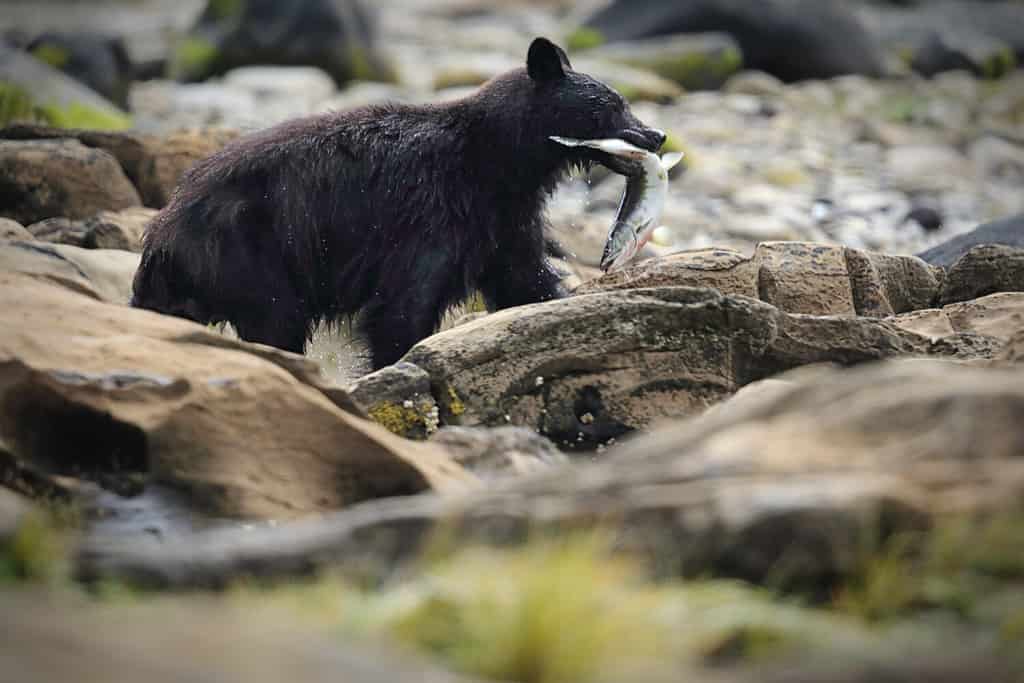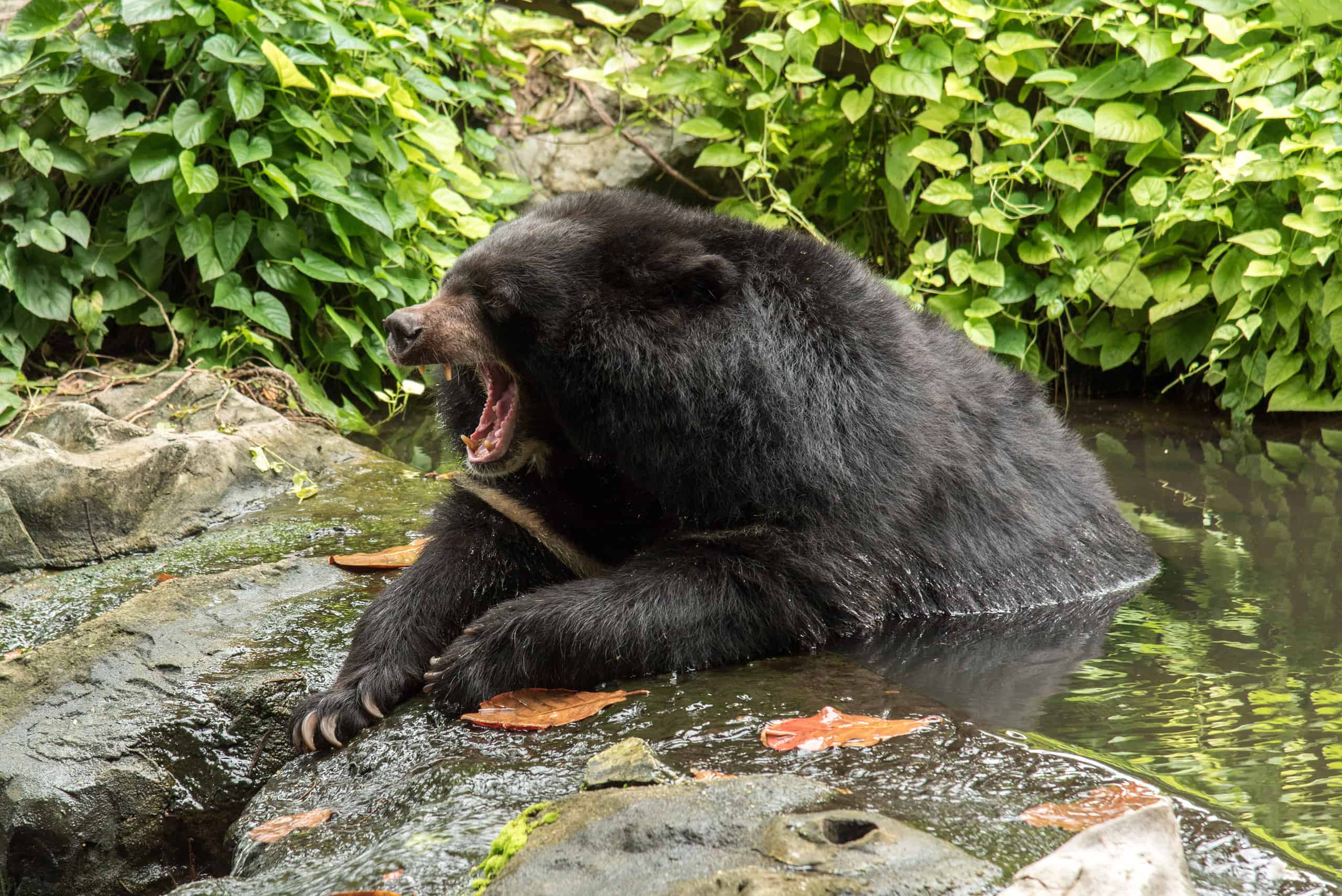Continue reading for our analysis...

The bear intimidates you with its strength and size, but its intelligence should make you revere it even more. Many people may be unfamiliar with the fact that the average bear is smarter than expected.
Bears can execute complex tasks, indicating their ability to process data and learn. Indeed, circus lovers have seen bears play musical instruments, roller skate, and even balance on balls.
They may not be able to learn sign language, but bears can outsmart humans in generating solutions to physical challenges. This video shot in Russia captured this animal’s capability to think its way out of a bear trap.

Bears are known for their intelligence and can outsmart humans in generating solutions to physical challenges.
©Mark Caunt/Shutterstock.com
Bears Are Skilled in Many Ways
Bears have an uncanny reputation for evading human predators. In what could appear like forethought, bears have been observed to conceal their tracks using trees and rocks to hide their location. Bears can also identify a trap in ways attributable to more than instincts.
For instance, in the video, the bear can be seen approaching a cage with a fish hanging inside. The bear was likely drawn to the cage by its strong sense of smell, which can be up to seven times sharper than that of a bloodhound.
Scientists have observed that a bear’s sense of smell is superior to any land animal’s. Black bears, like the one in the video, can smell food up to two miles away. Meanwhile, the polar bear can smell a seal 40 miles away.
Interestingly, the bear in this video senses that the fish is part of a trap. Its hunger tells it to go for the fish, but its brain tells it to avoid entering the cage. The bear tries to solve this dilemma by going around the fish and attempting to access it from the outside.
It stretches its arm and grabs the fish, but the space is too small to allow the bear to bite a chunk off. After struggling for a brief session, the bear decides it can’t afford to lose the meal.
In characteristic bear cunningness, it approaches the cage’s entrance and gets it but ensures its hind limbs remain near the cage entrance. It stretches, takes a quick fish bite, and quickly comes out of the cage. The bear goes in for the second bite but accidentally steps on the trigger mechanism, which shuts the door, instantly trapping it.
The bear forgets about the remaining chunk of fish and jumps around frantically, trying to escape.

Black bears can smell food up to two miles away.
©Mark Caunt/Shutterstock.com
Turning to Brute Force
After realizing it can’t compromise the mesh, the bear focuses on the door and shows it can apply force to lift the door high enough to allow a quick getaway.
Fascinatingly, the bear doesn’t push the door outside as one would expect but pulls it inside. It was as if the bear already knew the door’s working mechanism.
At first, the bear pulls the door from the mid-section but soon realizes its body is getting in the way. It unsuccessfully tries to compromise the walls of the cage before deciding to focus on the door. This time around, the bear focuses on the bottom section of the door, changes strategy, and applies sufficient brute force to bend the door metal, creating enough space to get away.

Bears in the wild typically aren’t trapped unless wildlife managers are trying to remove them from areas of conflict.
©APIWICH PUDSUMRAN/Shutterstock.com
Is This Behavior Normal in a Bear?
You may be wondering: is it common for a bear to be this smart when encountering a cage trap, and beyond that, manage to escape it? Box/cage traps with wire mesh tend to be more tempting for a wary bear than a culvert trap (enclosed box) because the bear can see through the mesh easily. While this type of trap is generally favored by the public because it’s less dangerous than some other kinds, the mesh needs to be small enough to prevent the bear from damaging its claws and teeth. Many bears are “trap-shy,” so this kind of trap puts some of them at ease.
In general, it’s not unusual for a bear to be wary of entering a cage, even with bait. In the case of the enclosed culvert cage, there’s only a 20% success rate with it catching bears. There’s another video documenting a bear that spent 14 hours circling an electric trap before managing to get a deer carcass without being caught. In that particular case, the bear actually disarmed the battery that powered the electrical current!
In general, bears are unable to escape an enclosed trap once they are firmly trapped. If you noticed that particular cage, the door was slanted, and the bear was almost able to escape from it earlier than he successfully did. Perhaps the fault lay in the construction of that cage. Either way, that bear was definitely using his head before and during his captivity!

In general, bears are unable to escape an enclosed cage once they are firmly trapped.
©Anton Dios/Shutterstock.com
What Kind of Bear Got Caught in the Trap?

You can find the largest Eurasian
brown bear
population in the world in Russia’s Ural Mountain range.
©Erik Mandre/Shutterstock.com
You likely noticed that the people in the video were speaking another language. The person who posted the video stated that the film was shot in Russia on the Lor-Yeganskoye oil field. Bears can become a problem at times in areas where business is being conducted, so these types of traps are set to capture and relocate them.
Given that we know an approximate location, what kind of bear found itself in the bear trap? It seems obvious that the bear was a type of brown bear. With that clue, let’s do a process of elimination. The four types of bears inhabiting Russia are the Kamchatka brown bear, the Ussuri brown bear, the Eurasian brown bear, and the Russian polar bear.
The most common species of Russian brown bear is the Eurasian variety, most populous in Siberian forests east of the Ural mountains. Kamchatka bears are located in the farthest eastern area of Russia and are very close in size and appearance to North American grizzly bears. The only brown bear larger than a Kamchatka bear is the Alaskan Kodiak bear.
Ussuri bears are most populous in the Shiretoko Peninsula near the border of China. They are also known as “black grizzlies” because their fur is darker than other brown bears like the Kamchatka type, sometimes completely black. Russian polar bears are the opposite–they sport the classic light or white fur one would expect.
This particular oil field mentioned is hard to nail down in a specific location, as multiple options in Russia were given. None were in the vicinity of Kamchatka, so it’s safe to rule out that option. On location appeared to be far north of Mongolia, while all other locations were much farther northwest going toward Europe. It’s a safe guess that this brown bear was a Eurasian brown bear, but it could possibly have been a Ussuri bear.
Thank you for reading! Have some feedback for us? Contact the AZ Animals editorial team.






